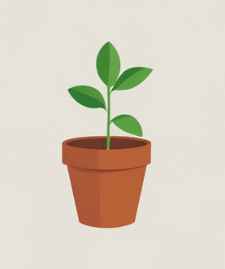*This post includes sponsored links. I may earn a small commission if you make a purchase — thank you!*
The Garden Tower 2 makes growing food in a small space surprisingly easy — but did you know that plant placement really matters? Because of the tower’s unique shape and sun exposure, some plants will thrive better in certain levels than others.
In this guide, I’ll break down the best crops for the top, middle, and bottom levels so you can get the most from every pocket.
☀️ Top Level: Best for Sun-Loving, Upright Plants
The top of the Garden Tower 2 gets the most sunlight and has the least shading from other plants. It’s also easy to access for regular harvesting.
Best plants for the top level:
- 🍅 Cherry tomatoes (with small support cage)
- 🫑 Mini peppers
- 🧅 Green onions
- 🌿 Basil, oregano, and other upright herbs
Tips: Choose compact or dwarf varieties. Use a small trellis or stake for taller crops.
🌤️ Middle Levels: Best for Leafy Greens and Root Crops
The middle tiers get moderate sun and stable temperatures — perfect for crops that don’t like extreme heat or shade.
Best plants for the middle levels:
- 🥬 Lettuce and leafy greens
- 🥗 Spinach and arugula
- 🥕 Baby carrots and small beets
- 🌱 Cilantro, dill, and parsley
Tips: Rotate your plantings seasonally — leafy greens love cooler temps and can be grown most of the year in many climates.
🌥️ Lower Levels: Best for Shade-Tolerant and Trailing Plants
The bottom levels are shaded more often and benefit from cooler soil. This is where you should plant crops that like less direct sun or those that spill over the edges.
Best plants for the bottom levels:
- 🍓 Strawberries
- 🌿 Mint, thyme, and chives
- 🥒 Small cucumbers (let vines trail down)
- 🥗 Cut-and-come-again salad mixes
Tips: Trailing plants do great here — just let them hang over the edge. If you’re in a hot climate, reserve the bottom pockets for anything that prefers partial shade.
🌿 Bonus: Use the Center Tube Wisely
The compost tube in the middle is for food scraps and worms — not for planting — but it plays a big role in fertilizing your crops. Make sure you feed it regularly with kitchen scraps, and consider adding red wiggler worms for better composting.
🏁 Final Thoughts
The Garden Tower 2 gives you 50 growing pockets — but knowing where to plant each crop can really improve your success. Use the sun levels and crop types as a guide, and don’t be afraid to experiment as the seasons change.
